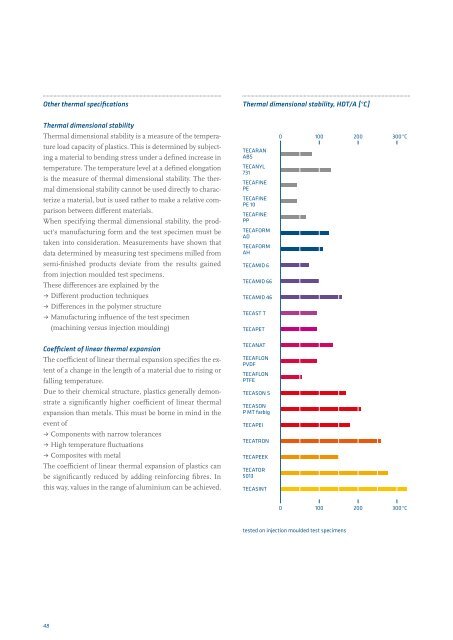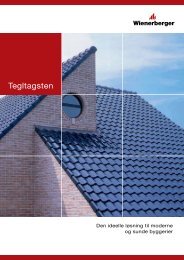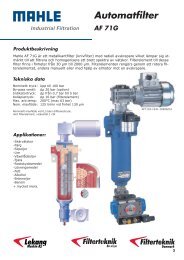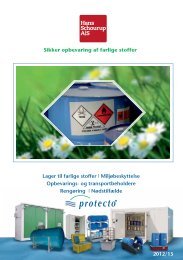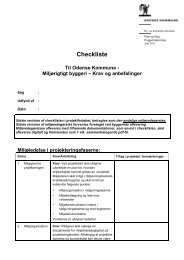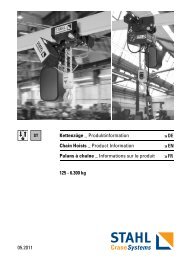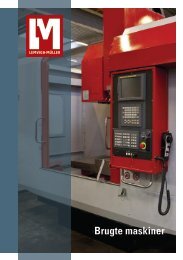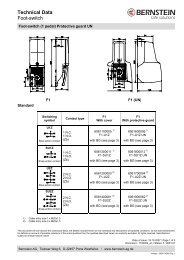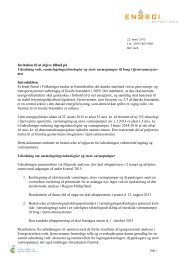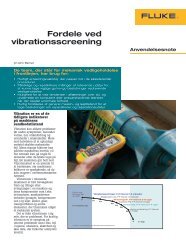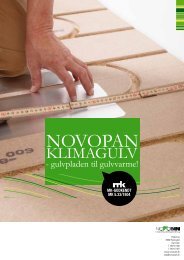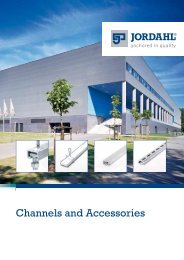Engineering plastics â The Manual - F.wood-supply.dk
Engineering plastics â The Manual - F.wood-supply.dk
Engineering plastics â The Manual - F.wood-supply.dk
You also want an ePaper? Increase the reach of your titles
YUMPU automatically turns print PDFs into web optimized ePapers that Google loves.
Other thermal specifications<br />
<strong>The</strong>rmal dimensional stability, HDT/A [°C]<br />
<strong>The</strong>rmal dimensional stability<br />
<strong>The</strong>rmal dimensional stability is a measure of the temperature<br />
load capacity of <strong>plastics</strong>. This is determined by subjecting<br />
a material to bending stress under a defined increase in<br />
temperature. <strong>The</strong> temperature level at a defined elongation<br />
is the measure of thermal dimensional stability. <strong>The</strong> thermal<br />
dimensional stability cannot be used directly to characterize<br />
a material, but is used rather to make a relative comparison<br />
between different materials.<br />
When specifying thermal dimensional stability, the product's<br />
manufacturing form and the test specimen must be<br />
taken into consideration. Measurements have shown that<br />
data determined by measuring test specimens milled from<br />
semi-finished products deviate from the results gained<br />
from injection moulded test specimens.<br />
<strong>The</strong>se differences are explained by the<br />
ˌˌDifferent production techniques<br />
ˌˌDifferences in the polymer structure<br />
ˌˌManufacturing influence of the test specimen<br />
(machining versus injection moulding)<br />
TECARAN<br />
ABS<br />
TECANYL<br />
731<br />
TECAFINE<br />
PE<br />
TECAFINE<br />
PE 10<br />
TECAFINE<br />
PP<br />
TECAFORM<br />
AD<br />
TECAFORM<br />
AH<br />
TECAMID 6<br />
TECAMID 66<br />
TECAMID 46<br />
TECAST T<br />
TECAPET<br />
0<br />
100<br />
200<br />
300 °C<br />
Coefficient of linear thermal expansion<br />
<strong>The</strong> coefficient of linear thermal expansion specifies the extent<br />
of a change in the length of a material due to rising or<br />
falling temperature.<br />
Due to their chemical structure, <strong>plastics</strong> generally demonstrate<br />
a significantly higher coefficient of linear thermal<br />
expansion than metals. This must be borne in mind in the<br />
event of<br />
ˌˌComponents with narrow tolerances<br />
ˌˌHigh temperature fluctuations<br />
ˌˌComposites with metal<br />
<strong>The</strong> coefficient of linear thermal expansion of <strong>plastics</strong> can<br />
be significantly reduced by adding reinforcing fibres. In<br />
this way, values in the range of aluminium can be achieved.<br />
TECANAT<br />
TECAFLON<br />
PVDF<br />
TECAFLON<br />
PTFE<br />
TECASON S<br />
TECASON<br />
P MT farbig<br />
TECAPEI<br />
TECATRON<br />
TECAPEEK<br />
TECATOR<br />
5013<br />
TECASINT<br />
0<br />
100<br />
200<br />
300 °C<br />
tested on injection moulded test specimens<br />
48


